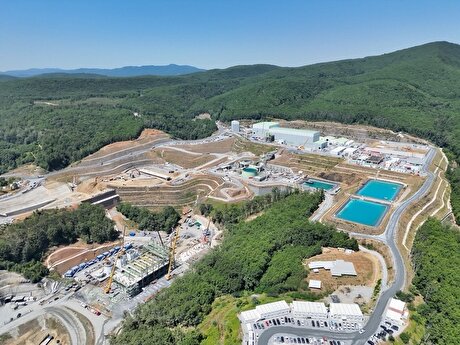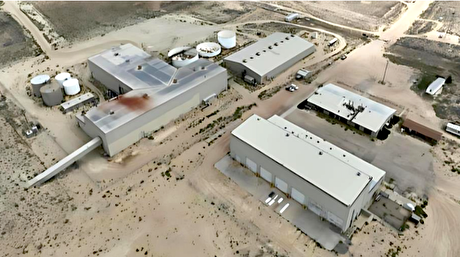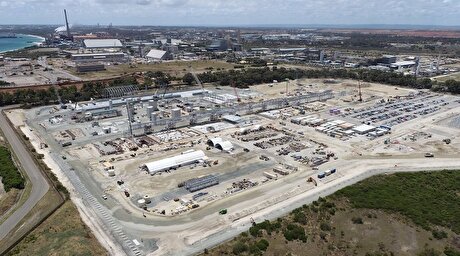
Iran's PPP-Based Per Capita GDP 67th Among 191 Countries


An analysis by Tehran Chamber of Commerce, Industries, Mines and Agriculture published on its official website has sought to compare the standing of Iran and other countries, including neighbors, in IMF indices.
When calculating per capita GDP, each country reports data based on its national currency. But in order to compare different countries, all data need to be translated into an international currency.
There are two major methods to make this happen: per capita GDP based on a "nominal" rate and per capita GDP based on purchasing power parity or PPP.
The nominal method employs a currency rate and therefore does not take into account the difference in costs of life in different countries. In this vein, currency fluctuations may change the ranking of countries noticeably from one year to another.
The PPP method, on the other hand, is more efficient since it changes currencies to get a clearer picture. For instance, if an item is sold for 2 pounds in London and $4 in New York, the PPP method considers an exchange rate of 1 pound to $2. However, the difficulty in calculations is the method's main challenge.
Based on IMF figures, Iran's per capita GDP in 2017 was at $5,305 according to the nominal method, which means the country ranked 98 among 191 countries.
This is while Turkey and Saudi Arabia fared considerably better than Iran in the same period: The former's per capita GDP calculated as per the nominal method was twice that of Iran while the latter's per capita GDP was four times the number registered by Iran. Turkey and Saudi Arabia ranked 67 and 40 in 2017.
Using the PPP method, Iran's per capita GDP in 2017 was reported by IMF at $20,200, which gives it a noticeably better rank of 67th among all the countries under review.
However, the method leads to significantly improved rankings for Turkey and Saudi Arabia. The former had a PPP per capita GDP of $26,893 to secure a rank of 55th while the latter registered its PPP per capita GDP figure at $54,777 to grab an impressive ranking of 14th.
Notably, developed nations with sound economies like Germany and South Korea ranked lower than Saudi Arabia in terms of per capita GDP. Germany's PPP and nominal per capita GDPs in 2017 were reported by the IMF at $50,425 and $44,550 to give it global rankings of 18 and 19 respectively. South Korea's PPP and nominal per capita GDPs reached $39,434 and $29,891 to put its global rankings at 32 and 30 respectively.
A comparison of PPP and nominal per capita GDP of all countries shows considerable differences. For instance, from the 191 countries, the PPP per capita GDP of 178 countries was higher than their nominal figures. Both numbers were equal in the case of the US.
Discrepancies were stark in the case of some countries. Using the PPP method, the figure of 30 countries was about three times their nominal figure.
Sudan registered the highest discrepancy between its two figures. The country's PPP per capita GDP was 6.5 times higher than its nominal figure. It was followed by Egypt (5.1 times higher), Myanmar (4.9 times), Uzbekistan (4.6 times) and Azerbaijan (4.2 times).
Iran emerged as the seventh country with the highest difference between its PPP and nominal per capita GDP figures since its PPP figure was 3.8 times higher than the nominal figure.
"Countries with considerable differences between their per capita GDPs based on the nominal and purchasing power parity methods are mostly those that have a high volume of government subsidy paid to consumers," TCCIMA wrote in its report on IMF figures.
This means subsidies paid to households by the governments of Iran have had a significant impact on the purchasing power of consumers without leading to an actual increase in the real income of households.


BHP, Vale accused of ‘cheating’ UK law firm out of $1.7 billion in fees

Trump tariff surprise triggers implosion of massive copper trade

Eldorado to kick off $1B Skouries mine production in early 2026

Newmont nets $100M payment related Akyem mine sale

Southern Copper eyes $10.2B Mexico investment pending talks

Copper price collapses by 20% as US excludes refined metal from tariffs

St Augustine PFS confirms ‘world-class’ potential of Kingking project with $4.2B value

First Quantum scores $1B streaming deal with Royal Gold

Maxus expands land holdings at Quarry antimony project in British Columbia

Australia pledges $87M to rescue Trafigura’s Nyrstar smelters in critical minerals push

Fresnillo lifts gold forecast on strong first-half surge

Why did copper escape US tariffs when aluminum did not?

Fortuna rises on improved resource estimate for Senegal gold project

Caterpillar sees US tariff hit of up to $1.5 billion this year

Uranium Energy’s Sweetwater plant on fast track for in-situ mining approval

Tianqi Lithium Australia JV says it is prioritizing long-term viability of refinery

First Quantum scores $1B streaming deal with Royal Gold

One dead, five missing after collapse at Chile copper mine

Eldorado to kick off $1B Skouries mine production in early 2026

Australia pledges $87M to rescue Trafigura’s Nyrstar smelters in critical minerals push

Fresnillo lifts gold forecast on strong first-half surge

Why did copper escape US tariffs when aluminum did not?

Fortuna rises on improved resource estimate for Senegal gold project

Caterpillar sees US tariff hit of up to $1.5 billion this year

Uranium Energy’s Sweetwater plant on fast track for in-situ mining approval

Tianqi Lithium Australia JV says it is prioritizing long-term viability of refinery

First Quantum scores $1B streaming deal with Royal Gold

One dead, five missing after collapse at Chile copper mine














